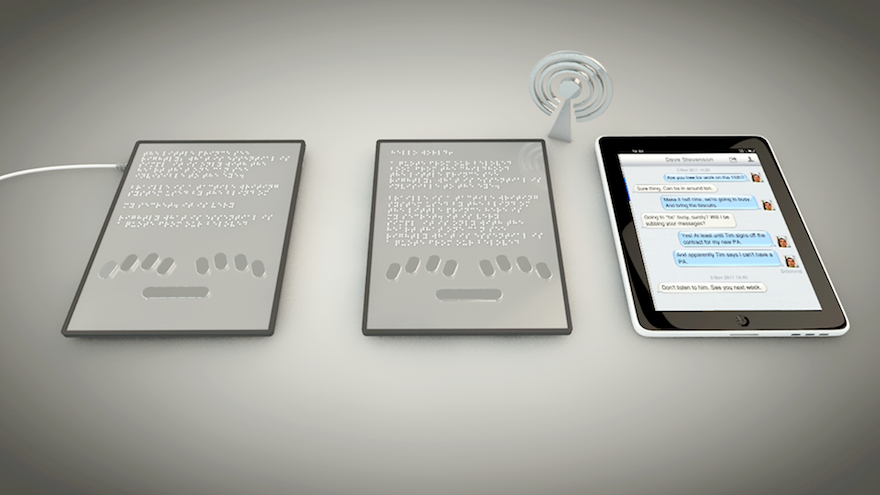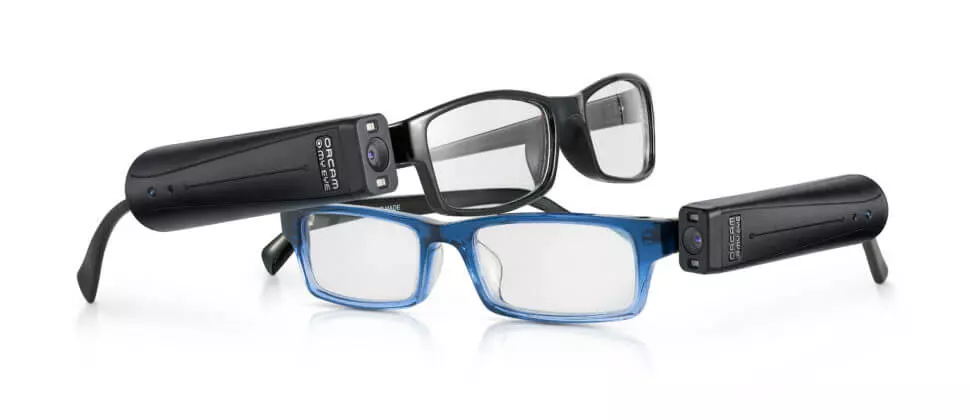Discover Cutting-edge Devices Made for the Visually Impaired
The growth of innovative devices for the visually impaired stands for a considerable innovation in ease of access and self-reliance. Technologies such as smart glasses with AI capacities and mobile applications created to give acoustic descriptions are reshaping everyday experiences for users.
Smart Glasses for Navigating

Smart glasses developed for navigation are transforming the way aesthetically damaged individuals connect with their setting. These advanced devices make use of a combination of cam technology, expert system, and acoustic comments to give real-time info concerning environments. By utilizing obstacle discovery systems, smart glasses can notify users to possible threats, making it possible for safer flexibility in both strange and acquainted setups.
The assimilation of GPS modern technology additionally boosts navigation capabilities, permitting customers to get acoustic instructions as they relocate. This hands-free method not just promotes freedom however also empowers aesthetically impaired individuals to navigate city landscapes with enhanced confidence. Furthermore, lots of wise glasses are equipped with functions that identify sites and street indications, supplying contextual information that enhances the individual experience.
Furthermore, the growth of these tools is continuously advancing, with business functioning to enhance the precision of item acknowledgment and expand the series of navigational attributes. As clever glasses end up being extra affordable and accessible, they hold the prospective to significantly change life for aesthetically impaired individuals. Ultimately, these innovative tools represent a vital action towards inclusivity, offering improved flexibility and a higher feeling of freedom for people browsing the world around them.

Mobile Application for Daily Living
Just how can mobile applications improve the every day lives of visually damaged people? Mobile applications are reinventing the way visually impaired individuals browse their settings, manage day-to-day tasks, and gain access to info. These applications give necessary assistance through various performances, promoting independence and improving top quality of life.
Several innovative mobile applications are created especially for daily living. Applications like Be My Eyes connect aesthetically damaged individuals with sighted volunteers through video calls, enabling them to get real-time assistance with jobs such as reviewing tags or browsing unfamiliar rooms. Likewise, Seeing AI, developed by Microsoft, makes use of expert system to define surroundings, checked out message, and recognize items, properly changing a smart device right into an effective tool for daily support.
In addition, navigation applications tailored for the aesthetically impaired, such as Aira and BlindSquare, use audio-based directions and environmental information, allowing customers to traverse their surroundings securely and with confidence. Beyond navigating and prompt support, mobile applications additionally support company and task management, with functions that assist customers set tips, produce order of business, and track visits. In recap, mobile applications serve as essential resources, empowering visually impaired people to lead even more independent and satisfying lives.
Wearable Technologies for Aid
Empowerment via technology is progressively noticeable in the world of wearable tools developed to aid aesthetically impaired people. These innovative devices integrate seamlessly right into day-to-day live, enhancing navigation and providing vital responses to customers. For circumstances, smart glasses equipped with cameras can check out and recognize faces message out loud, permitting users to engage more with confidence in expert and social setups.
An additional notable advancement is the usage of haptic responses systems in wearable devices. These systems utilize resonances or other responsive signals to share details about the user's setting, such as obstacles or changes in terrain, improving wheelchair and safety and security. Wearable technologies also consist of wristbands that connect to smart devices, alerting customers to notices through subtle vibrations, therefore boosting connection without reliance on visual cues.
As these technologies remain to advance, they are not only improving independence for aesthetically impaired individuals however additionally cultivating a better sense of incorporation in society. By connecting the void in between obstacles encountered in daily living and the capacity for autonomy, wearable technologies offer as critical tools in the pursuit for equal rights and empowerment for those with visual impairments.
Audio Description Devices
Audio description devices play an essential role in boosting ease of access for visually impaired individuals, providing them with the ability to involve with aesthetic media. Smart glasses for the visually impaired. These devices use narrated descriptions of key visual find out elements in movies, television shows, and live efficiencies, guaranteeing that users can completely understand the context and feelings conveyed via visuals
Audio summary can be incorporated right into various systems, consisting of streaming services, movie theater testings, and live cinema. Numerous prominent streaming services now include audio summary as an ease of access function, permitting audiences to select it quickly. Along with conventional media, specialized applications likewise exist, providing audio descriptions for art exhibits, galleries, and other cultural occasions.
The performance of audio summary hinges on the skill of the narrators, that should convey visual information succinctly without detracting from the original audio. Technologies in this area are also leading the way for more tailored experiences, where users can change the degree of detail and pacing according to their choices.
Braille Innovations and Gadgets
Braille tools and technologies have considerably transformed the method aesthetically damaged people interact with text and information. Modern developments have led to the advancement of flexible tools that enhance literacy and self-reliance amongst users.
Moreover, portable Braille notetakers combine traditional Braille input with modern-day capabilities, helping with note-taking, organizing, and file editing and enhancing on the go. Wearable technology for low vision. These portable devices typically include text-to-speech abilities, bridging the void between Braille and acoustic info
Additionally, innovative Braille printers have emerged, allowing users to create Braille labels, records, and instructional products browse around this site efficiently. This access fosters better participation in specialist and academic atmospheres, ultimately promoting inclusivity.
Additionally, research right into smart Braille modern technologies remains to expand. Devices that integrate fabricated intelligence are being explored to provide real-time navigating support and contextual information, improving the individual experience in diverse settings. Generally, these developments mirror a dedication to encouraging aesthetically impaired people via visit site technology, ensuring they can easily gain access to and involve with the world around them.

Conclusion
The development of ingenious tools for the visually damaged considerably enhances self-reliance and top quality of life. Smart glasses, mobile applications, wearable technologies, audio summary tools, and Braille developments collectively encourage individuals by providing crucial navigating aid, ecological awareness, and boosted reading experiences. These modern technologies not only foster greater addition yet also advertise autonomy in day-to-day activities, ultimately adding to a more fair and easily accessible society for visually impaired people. Continued advancement in this field holds promise for additional enhancements.
As clever glasses come to be extra budget-friendly and available, they hold the possible to significantly transform day-to-day life for aesthetically impaired users. Mobile applications are reinventing the way aesthetically impaired customers navigate their atmospheres, handle day-to-day tasks, and gain access to information. Applications like Be My Eyes attach aesthetically damaged users with sighted volunteers through video phone calls, allowing them to get real-time assistance with tasks such as reviewing tags or browsing unknown rooms.Additionally, navigation apps customized for the aesthetically damaged, such as Aira and BlindSquare, supply audio-based directions and environmental details, enabling users to traverse their surroundings safely and confidently.The innovation of innovative tools for the visually damaged considerably boosts freedom and quality of life.